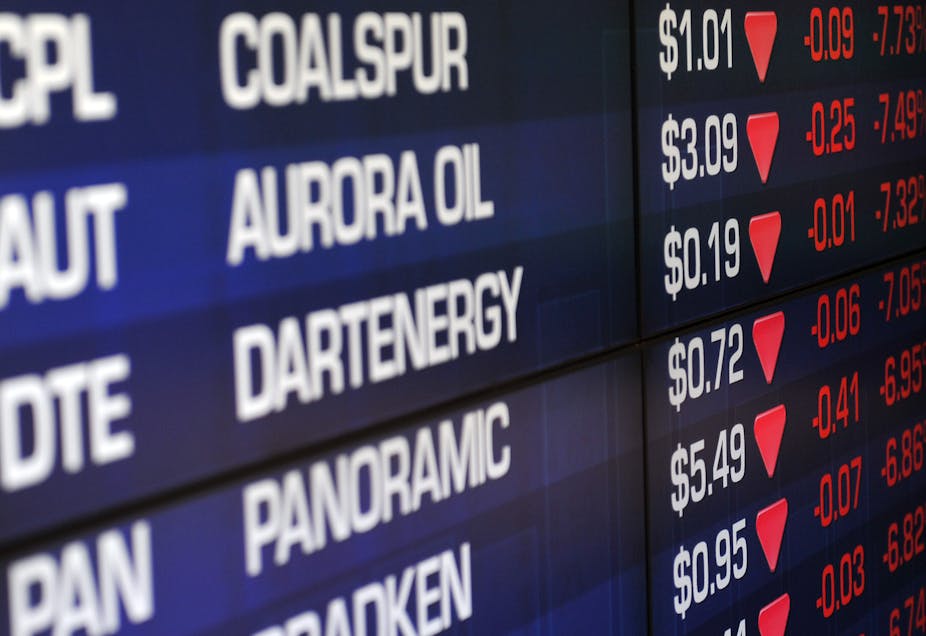All eyes will be on the Reserve Bank of Australia board this afternoon as it meets to decide whether to further cut interest rates.
Australian markets tumbled 2% yesterday in the wake of poor US jobs data, with the ASX 200 index closing below the 4000 point barrier.
The Melbourne Institute Inflation Index Gauge remained flat in May, after a 0.3% increase in April and 0.5% increase in March.
Read more about the Centre for Applied Macroeconomic Analysis (CAMA) Shadow Board here.
Read the individual comments of Shadow Board members here.
But James Morley, Professor of Economics at UNSW and a member of the Centre for Applied Macroeconomic Analysis (CAMA) Shadow RBA Board - which meets monthly prior to the RBA - explains why a majority of its board members believe rates should stay where they are.
The Shadow RBA Board’s aggregate opinion suggests the RBA should keep the cash rate steady when it meets today. What is the thinking there?
The aggregate opinion of the Shadow Board puts by far the most weight - roughly 60% - on keeping the target rate at 3.75%. There is more weight on lowering the rates than raising it - but with 60% on holding steady that’s a fairly clear signal.
This also shows up with each of the individual recommendations which always put the most weight on holding steady, except in one case where it is equally suggested the RBA holds steady versus cutting the rates to either 3.5% or 3.25%.
Looking at the comments from the shadow board members there are many reasons suggested for holding - although mostly the emphasis is on domestic economic conditions rather than global conditions. The domestic headline inflation rate is below the RBA’s target range of 2-3%, but the underlying inflation rate - removing the volatile food and energy prices - is around 2.25%, which is within the target range.
The unemployment rate is at 4.9%, which is a fairly low level historically and also in comparison with many other developed economies right now. Many European countries and the US can only dream of unemployment rates under 5%.
Overall, these are fairly balanced conditions for the Australian economy. The other common theme that comes out of the comments is that the RBA aggressively cut interest rates by 50 basis points last month, so they have already taken out some insurance on the possibility that things might deteriorate in the domestic economy. At this point it doesn’t make sense to move a lot more until we see the effects of the past cuts as well as what will happen with the global situation, where there is still a lot of uncertainty.
You mentioned domestic conditions such as underlying inflation within target range and relatively low unemployment. How much of the global conditions are reflected in the recommendations?
You can see from the comments that there are serious concerns about a financial crisis resulting from a possible collapse of the Euro, with the exit of Greece perhaps followed by Spain and Italy growing more likely by the day. This would require a very aggressive response from central banks throughout the world, similar to what we saw after Lehman Brothers collapsed in 2008 - but only if it comes to pass.
In terms of other global conditions, China and the US are more important for Australian exports than is Europe. China tightened its monetary policy about a year ago and this did have some affects in slowing growth. But now they’ve reversed that - they are trying to stimulate the economy. There’s a question of how successful the stimulus will be. So that’s a risk for Australia, particularly the mining sector.
The US recovery remains tepid. Some numbers earlier this year had been a bit better - particularly on the jobs front - but last month’s jobs numbers were quite disappointing. It’s one of the factors causing equity markets around the world to fall. So there is some risk there too.
But for the Australian economy, the dollar has dropped a considerable amount since the rates cut last month. This should eventually help exports to China, US and other economies - although probably not Europe, which is likely to be mired in recession even if the Euro doesn’t collapse.
So would the possible collapse of the Euro be a significant factor in today’s decision?
The RBA would probably move very quickly and aggressively if the Euro collapses, much like what happened during the global financial crisis.
But that is a very different form of monetary policy than the usual prospective decisions based on the inflation outlook as well as the outlook for unemployment and real GDP.
At this point the RBA can focus on these factors and see what happens on the domestic front and in terms of China and the US before adjusting rates further - but always with the option of responding immediately in the event of a crisis.

